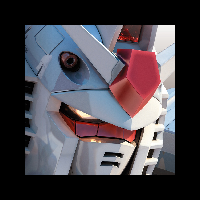訊息: 33
語言: English
Chainy (顯示個人資料) 2011年9月13日下午6:57:16
ceigered:...and "Makula/punkta ĉevalo" should do it for the horse.In Zamenhof's translation of the Old Testament he uses 'mikskolora' and 'makulita':
"...mi pasos hodiaŭ tra via tuta ŝafaro; apartigu el ĝi ĉiun ŝafon mikskoloran kaj makulitan kaj ĉiun bruton nigran inter la ŝafoj, kaj makulitan kaj mikskoloran inter la kaproj; kaj ili estu mia rekompenco."
Chainy (顯示個人資料) 2011年9月13日下午7:06:39
darkweasel:concerning your question, i'd say "mi vidis chevalon havantan farbon sur si".I have doubts about using 'farbo' in such a sentence. I think 'farbo' is used only in the sense of:
"Miksaĵo, konsistanta el likvaĵo (ordinare oleo) kaj koloraj substancoj, uzata por ŝmiri surfacon kaj ĝin kolorigi"
That is, it's the stuff you paint on a wall, for example.
Chainy (顯示個人資料) 2011年9月13日下午7:09:32
Zafur:The difference is really subtle... I'm not entirely sure I can see the difference?'pentri' is used in the artistic sense. To paint a picture etc.
'farbi' is used in the more DIY sense. To paint a wall, a fence etc.
darkweasel (顯示個人資料) 2011年9月13日下午7:12:10
Chainy:... or the stuff you paint pictures with. Or how does that not fit the definition?darkweasel:concerning your question, i'd say "mi vidis chevalon havantan farbon sur si".I have doubts about using 'farbo' in such a sentence. I think 'farbo' is used only in the sense of:
"Miksaĵo, konsistanta el likvaĵo (ordinare oleo) kaj koloraj substancoj, uzata por ŝmiri surfacon kaj ĝin kolorigi"
That is, it's the stuff you paint on a wall, for example.
Chainy (顯示個人資料) 2011年9月13日下午7:18:19
darkweasel:As I understand, we're not talking about a painted picture of a horse, but about pinto horses (ein Schecke)darkweasel:concerning your question, i'd say "mi vidis chevalon havantan farbon sur si".... or the stuff you paint pictures with. Or how does that not fit the definition?
That's why I think 'farbo' isn't really the right word in this context.
darkweasel (顯示個人資料) 2011年9月13日下午7:25:34
Chainy:OK, then I misunderstood that.darkweasel:As I understand, we're not talking about a painted picture of a horse, but about pinto horses (ein Schecke)darkweasel:concerning your question, i'd say "mi vidis chevalon havantan farbon sur si".... or the stuff you paint pictures with. Or how does that not fit the definition?
That's why I think 'farbo' isn't really the right word in this context.
ceigered (顯示個人資料) 2011年9月14日上午2:42:30
Zafur:Just wondering, but there wouldn't be any confusion if I said something like "Mi vidis surpentrita ĉevalon."? Or would "I saw a horse with paint on it" be more like "Mi vidis surfarbita ĉevalon."?It depends. "Surpentrita cxevalo" is sort of a poetic way of describing a horse that has an artistic coat (read Chainy's messages that have come in after mine for a much better translation though - makul(it)a cxevalo sounds easier to understand).
It's sort of assuming the role of a "creator being" that "painted" the horse though, so it's not a very scientific way of describing the horse haha.
A surfarbita cxevalo is a horse that's been coloured.
But you're right for your concern about potential confusion, so Chainy's comments should be worth a read.
(BTW, I might add that any -ita construction vs just a plain -a could reflect the sort of philosophical viewpoint you're trying to describe the horse with. -ita means an action was done to the horse, while -a is simply a vague adjective. Might be useful, especially since it makes sense for biblical/religious/traditional texts to use "-ita". My understanding is that Pinto Horses are just regular horses though with fancy coats, so you've got a lot of freedom there).
Chainy (顯示個人資料) 2011年9月14日上午6:49:59
There must be established names for these specific types of horses in Esperanto, but I'm not sure where to find them. I now understand why some of you have been experimenting with variations of 'farb/' and 'kolor/' etc!
ceigered (顯示個人資料) 2011年9月14日下午12:16:58
 ?
? Zafur (顯示個人資料) 2011年9月14日下午1:36:20
Chainy's posts were useful.
 I think "mikskolora" is the easiest to understand and the least likely to give the impression that I just saw/rode a horse that had literal paint drip on it, although a little vague, as it probably covers appaloosa horses as well. I also like "makulita" as it more easily gives the idea of giant splotches/"stains" over a white coat, but also has the literal confusion of surpentrita. It might actually be best to drop the ita and swap it with an -a like suggested and stick to surpentra/makulta.
I think "mikskolora" is the easiest to understand and the least likely to give the impression that I just saw/rode a horse that had literal paint drip on it, although a little vague, as it probably covers appaloosa horses as well. I also like "makulita" as it more easily gives the idea of giant splotches/"stains" over a white coat, but also has the literal confusion of surpentrita. It might actually be best to drop the ita and swap it with an -a like suggested and stick to surpentra/makulta.Perhaps there is a need to specify the coat to eliminate the confusion?
Something like this, perhpas?: "Mi vidis surpentritfelan cxevalon."
